Lay-Out & Usability
[responsivevoice_button]
On front of the unit you from left to right have the 6.3mm single ended headphone output, the 4.4mm balanced output and the balanced XLR output. In the middle on the unit, the centred small screen and on the right the volume control/selection knob. At the bottom of the unit you will find the voltage switch, there’s nothing also on the top or the sides.
The back of the unit is very busy and you from left to right find the XLR outputs, the RCA outputs, the IIS input, the optical & coaxial input, the AES input, the power connector and the power button.
Using the DX7 Pro is very easy. The screen is very clear and shows you all you need to know, but the remote control really is needed to fully control the DX7 Pro
Sound – Intro
Before we get started on how it sounds, I quickly want to mention that even though the DX7 Pro doesn’t look powerful on paper, it actually performs quite well. There is a gain setting in the menu when using headphones and you can choose between low and high gain. I hardly ever needed High gain though.
The DX7 Pro also offers 7 different filter settings:
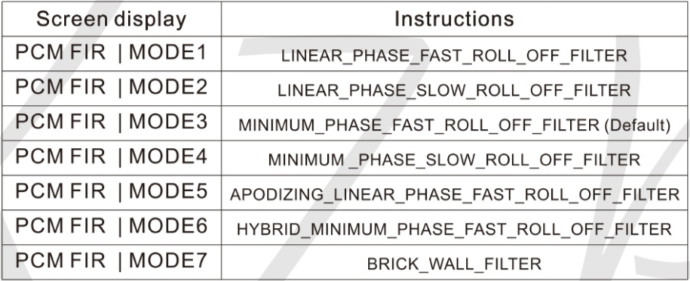
Topping DX7 Pro
I myself prefer the 1st one, though the difference between the different options isn’t very big. But at least you have the option.
Sound – DAC Only
In this review we’ll of course focus on using the DX7 Pro as a DAC/AMP combo, but I do want to dedicate a small part to its DAC only performance, as it is remarkably good. You have different digital input options and my two favorite with this unit are the USB and the coaxial one. With my laptop I tend to use the USB input, while I straight from a DAP (like the LP6) mostly use the coaxial one. As usual the coaxial input sounds a bit fuller, softer and more analog where the USB-input sounds livelier but more digital. They’re both good, but slightly different.
I have really loved using the DX7 PRO as a DAC for my 2nd speaker setup in my office. The setup there is a laptop with ROON, USB to the DX7 Pro, RCA OUT to my integrated amp, with B&W speakers. And yes, it sounds really great together.
The DX7 Pro is always in control and you get a clean, tight and very fast sound with great PRaT (pace, rhythm, and timing). The sound signature is balanced an very linear and the sound isn’t boosted in any way. The sound is super clear and precise and the detail retrieval is excellent. This is neutrality at it’s best, with no warmth, but with good musicality. Some might describe the DX7 Pro DAC as more dry sounding, but I found that this really depends on the quality of the source files in use. I do understand where this statement is coming from though, as not all the files in my collection are super high-res.
The sound stage width is very good, the depth is just as good but there still is room for improvement for what layering is concerned. At the same time, the DX7 Pro in DAC only mode never feels like its performance is limited either.
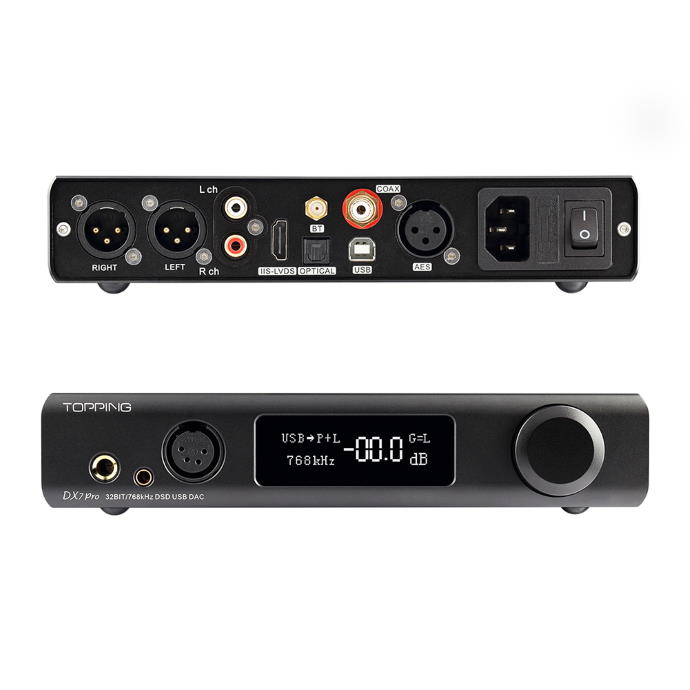
Topping DX7 Pro
Bass goes ultra-deep but it’s clean, tight, fast and precise. The vocals maybe are a bit more upfront and get some focus but they have amazing presence and strength. An excellent test track is “In this Moment – You’re gonna listen”
The upper mids and treble section is very energetic but the highs never get out of control or sound harsh.
Overall the DX7 Pro is excellent performer as a DAC only. Neutrality, balance, clarity, speed, energy and precision are the key characteristics for this unit in this mode.
Sound – Headphones
Intro
For this section I used the Hifiman Ananda (warmer) and Susvara (reference) as main headphones, with the DX7 Pro as DAC/AMP. The source is ROON over USB. More headphones will be tested later in this article.
Single Ended
General: A neutral and balanced presentation with a tiny bit of softness in the finish. The sound is clean, clear, transparent and natural. It’s a good mix of precision and musicality where the energy factor is just high enough. Bass, mids and highs perfectly connect to each other, the linearity is exemplary.
The detail retrieval is good and the layering actually pleasantly surprised me, especially in the lower region. Sound stage wise the extension is good and the amount of air and its spaciousness from top to bottom feel natural and realistic.
Bass: I absolutely like the bass here as it reaches very low with great layering. You really feel that sub bass presence and rumble. At the same time it’s never too much and the DX7 Pro is always in control. Bass is powerful yet controlled (think tightness and speed) and with a good amount of detail. Many will absolutely love this bass, it sits just right.
Mids: Spacious, natural and airy are the keywords here. The mids are musical and have great dynamics. They display just the right amount of air and the separation is clear and sharp. The vocals blend in perfectly and everything just sounds natural and engaging. An excellent test rack for this is “Billie Eilish – Listen before I go”
Treble: the higher region is clean and clear and also comes with the right amount of air and spaciousness. In single ended mode the highs extend well and they never sounded harsh, sharp or sibilant. If there’s something to improve here I’d probably say the dynamics here could be even better when compared to a high unit, but that wouldn’t be fair.
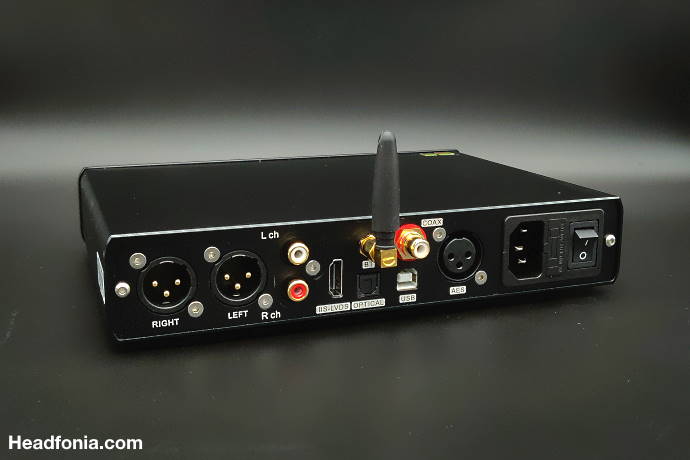
Topping DX7 Pro
Balanced
General: You get a different kind of sound in balanced mode, with overall better dynamics, improved spaciousness and better layering. At the same time the linearity, precision and natural presentation to me are not as good as in SE mode.
The sound stage width, depth and the spaciousness as well as the layering in balanced mode are more impressive. You get a fuller sound from bass to highs, and the delivery perhaps is less refined/precise. Even though the detail and precision still is there, it gets covered more by the level of bass and the mid-warmth and -thickness. The single ended mode sounds more linear and realistic where the balanced mode sounds more engaging, fuller and somewhat warmer. That being said, the DX7 Pro can’t be called a warm sounding piece of gear. Au contraire, but at the same time it’s not cold either, hence the warmish finish. Capiche?
Bass: The lows here are more full and come in bigger. They still go very low with great layering, but the impact and body here are more important. They kind of hide the detail and precision which is more audible in single ended mode. Bass isn’t as tight and precise as before but it’s still technically strong. If you’re into bass you will like this type of presentation.
Mids: Very spacious and natural with good body and depth. The layering here is very nice and you get a musical more warm delivery. The vocals sound a bit more to the front and while this doesn’t help for the linearity, it is a nice contrast to the more present, fuller bass.
Treble: The treble presentation in balanced mode is softer, but I do like it. The extension and spaciousness are very nice and they have a softer feel to it, but at the same time with enough detail. I love the depth and musicality here, and they perfectly match with the smoother mids.
The most neutral and correct presentation you will find in single ended mode. In balanced mode you get a smoother, softer, more musical presentation with more body but it at the same time has less pronounced detail.
The review continues on page 3, click here.





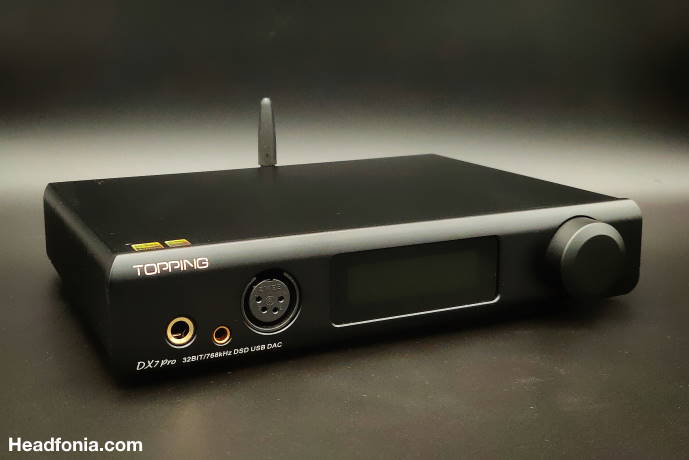
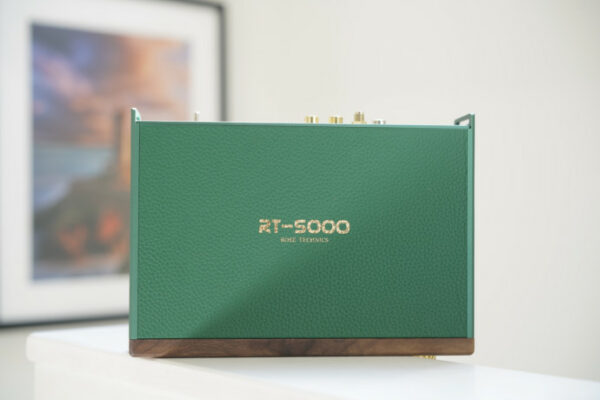
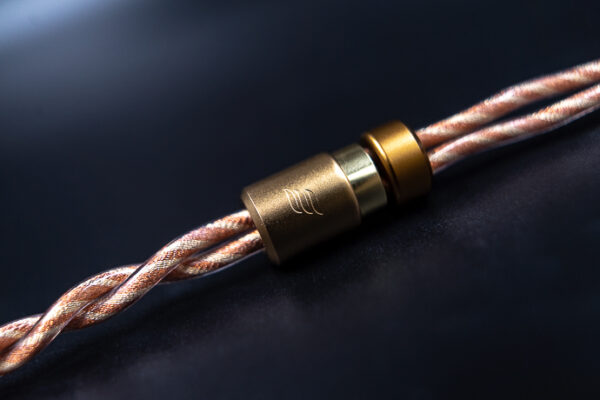
Mike I.
Very nice, extensive review again, Lieven. Thank you !
How was the Beyer DT1990PRO in balanced mode ?
Wills
I think the beyerdynamic DT series are all single ended only as the plug is a three pin plug.
MhtLion
In my opinion, DX7 Pro has too much gain in the headphone modules. It’s rather a common problem when over applying the voltage in order to increase the driving power.
For my ears, the XLR pre-outs were better – but by not much. As a pure DAC, I preferred D90.
CANiSLAYu
Buyer beware if you plan to out the headphone out with sensitive headphones or IEMs. The output impedance is quite high on this unit (4.7 ohm on SE and 9.4 ohm on BAL). This unit did not play nice with my HYLA Sarda (7ohm impedance) or Quad ERA-1 (20ohm impedance) as it affected the frequency response of those two (bloated bass, lack of clarity, etc.). No such issue on my Topping D90/A90 stack that I upgraded to.
Victor
I think timbre needs to be mentioned in a Dx7 Pro review. I had one and the original opamps in combination with the dac chip were really dry sounding. You can change the op amps, but even though the results are not optimal. (And you have to spend more money)
If you plan to use it without an external amp it will use two pairs of the LME op amps, the sound will be hyper texturized and nothing musical. It’s far from a natural presentation. So if that’s your cup of tea ok, but be aware what you’re buying.
Alex
> The Topping DX7 Pro is a bit cheaper than the Burson
a bit ? ))) topping dx7 pro – 600$, burson 3xp ~ 1300$ 😉
Siddesh
How will this do with Focal Elex (80 Ohms) and Clear (55 Ohms)? Will it be okay despite high output impedance?
IF at all there’s a change, will it matter that much or be too adverse of an effect?
Other than this I’m absolutely convinced this is a one and done device for powering headphones. The golden all in one.